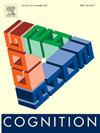Beyond syncopation: The number of rhythmic layers shapes the pleasurable urge to move to music
IF 2.8
1区 心理学
Q1 PSYCHOLOGY, EXPERIMENTAL
引用次数: 0
Abstract
People experience the strongest pleasurable urge to move to music (PLUMM) with rhythms of medium complexity, showing an inverted U-shaped relationship. Rhythmic complexity is typically defined by syncopation but likely interacts with the number and instrumentation of rhythmic layers (e.g., snare only vs snare and bass drum) in affecting PLUMM. This study investigated this interaction by comparing PLUMM ratings of rhythms with varying rhythmic layers and syncopation degrees.
Two online studies (study 1, n = 108; study 2, n = 46) were conducted asking participants to rate how much they wanted to move and the pleasure they felt while listening to rhythms. Each study used 12 rhythms in four versions: 1) snare only (SN) in study I and bass drum only (BD) in study II; 2) snare and hi-hat (SN + HH) in study I and bass drum and hi-hat (BD + HH) in study II; 3) snare and bass drum (SN + BD) and 4) the original with snare, bass drum, and hi-hat (SN + BD + HH) in both studies, totaling 48 stimuli per study. We tested for linear and quadratic effects of syncopation and rhythmic layers on PLUMM ratings.
Study I showed a significant interaction between syncopation and rhythmic layers. The SN + BD + HH versions exhibited the strongest inverted U as an effect of syncopation, followed by SN + BD and SN + HH, while SN showed a near-flat pattern of ratings as an effect of syncopation.
Study II had similar findings, but differences between versions were smaller, and the interaction was mainly driven by differences between BD and BD + HH and between SN + BD and SN + BD + HH, especially at moderate syncopation levels.
These findings suggest that the PLUMM response is shaped by the number of rhythmic layers, the roles that the different instruments play, and the way that they interact with each other and with syncopation, thus extending our understanding of the rhythmic features that drive the motor and hedonic responses to music.
超越切分音:节奏层次的数量塑造了人们随着音乐移动的愉悦冲动
人们体验到的最强烈的愉悦冲动是伴随着中等复杂节奏的音乐(PLUMM),呈现出倒u型关系。节奏复杂性通常由切分音定义,但可能与影响PLUMM的节奏层的数量和乐器相互作用(例如,只有小鼓与小鼓和低音鼓)。本研究通过比较不同节奏层和切分度的节奏的PLUMM评分来研究这种相互作用。两项在线研究(研究1,n = 108;研究2 (n = 46)要求参与者对他们想要移动的程度以及他们在听节奏时感受到的愉悦程度进行评分。每项研究使用了四个版本的12种节奏:1)研究I中只使用小鼓(SN),研究II中只使用低音鼓(BD);2)研究I中的小鼓和hi-hat (SN + HH)和研究II中的低音鼓和hi-hat (BD + HH);3) snare and bass drum (SN + BD)和4)original with snare, bass drum, and hi-hat (SN + BD + HH)在两项研究中,每项研究共48个刺激。我们测试了线性和二次效应的切分和节奏层对PLUMM评级。研究1显示切分音和节奏层之间有显著的相互作用。SN + BD + HH对切分的“倒U”效应最强,SN + BD和SN + HH其次,SN + BD和SN + HH对切分的“倒U”效应几乎呈平型。研究II也有类似的发现,但版本间差异较小,交互作用主要由BD与BD + HH、SN + BD与SN + BD + HH的差异驱动,尤其是在中等切分水平上。这些发现表明,PLUMM反应是由节奏层的数量、不同乐器发挥的作用以及它们相互作用和切分音的方式决定的,从而扩展了我们对驱动音乐运动和享乐反应的节奏特征的理解。
本文章由计算机程序翻译,如有差异,请以英文原文为准。
求助全文
约1分钟内获得全文
求助全文
来源期刊

Cognition
PSYCHOLOGY, EXPERIMENTAL-
CiteScore
6.40
自引率
5.90%
发文量
283
期刊介绍:
Cognition is an international journal that publishes theoretical and experimental papers on the study of the mind. It covers a wide variety of subjects concerning all the different aspects of cognition, ranging from biological and experimental studies to formal analysis. Contributions from the fields of psychology, neuroscience, linguistics, computer science, mathematics, ethology and philosophy are welcome in this journal provided that they have some bearing on the functioning of the mind. In addition, the journal serves as a forum for discussion of social and political aspects of cognitive science.
 求助内容:
求助内容: 应助结果提醒方式:
应助结果提醒方式:


